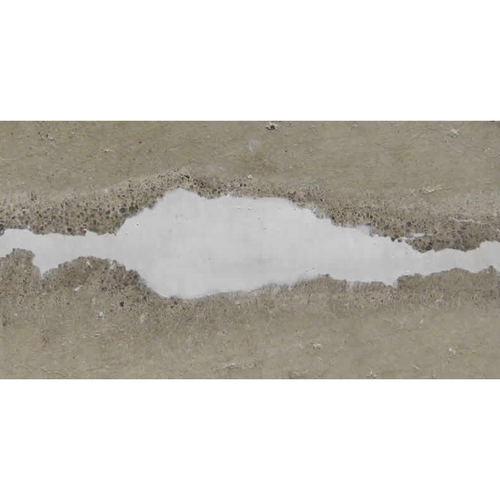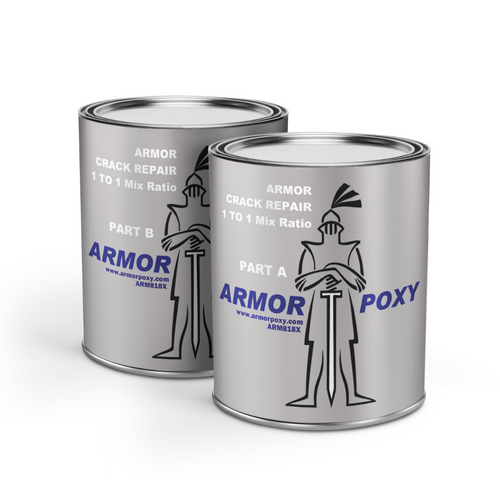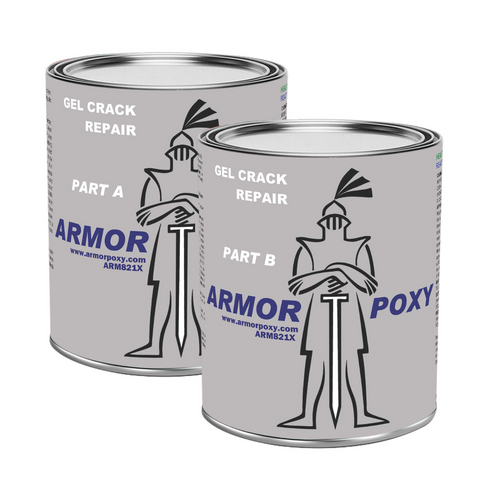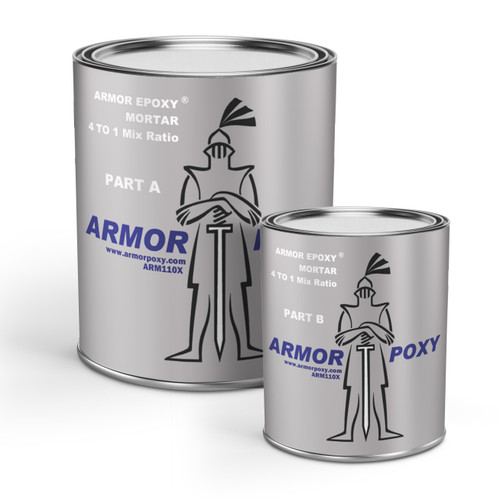
Garage Repair Solutions
Looking to repair your garage or concrete floor like a pro? ArmorPoxy’s complete line of industrial-grade crack fillers, epoxy coatings, and surface preparation tools makes it easy to get durable, long-lasting results.
Learn how to choose the right products and follow best practices for concrete repair, garage floor resurfacing, and epoxy installation.
Products
Maintaining your concrete surfaces and garage requires the right approach, quality materials, and proper techniques. Whether you're dealing with cracked concrete, preparing surfaces for new coatings, or ensuring your garage door is properly sealed against the elements, understanding the available solutions can save you time, money, and frustration.
At ArmorPoxy, we've developed comprehensive repair systems that address every aspect of concrete and garage maintenance. From instant crack repairs to complete floor restoration, our products are designed to provide professional-grade results for both DIY enthusiasts and professional contractors.
Understanding Concrete Damage and Repair Requirements
What causes concrete cracks and how can they be prevented?
Concrete cracking occurs due to various factors including temperature fluctuations, settling, moisture penetration, and structural stress. The key to effective repair lies in understanding the type of damage and selecting appropriate repair materials. For minor hairline cracks, a quality concrete crack filler can provide immediate protection and prevent water penetration that leads to more severe damage.
Temperature changes cause concrete to expand and contract, creating stress points that eventually develop into visible cracks. This is particularly common in garage floors where vehicles bring in moisture and salt during winter months. The expansion and contraction cycle is accelerated when moisture penetrates existing small cracks, freezing and expanding during cold weather.
Professional contractors often recommend using a specialized concrete crack filler that maintains flexibility while providing structural integrity. These products are formulated to move with the concrete as temperature fluctuations cause natural expansion and contraction cycles.
How do you choose the right repair method for different types of concrete damage?
Surface preparation is crucial regardless of the repair method chosen. For shallow cracks less than 1/4 inch wide, a flexible concrete crack filler provides excellent results. These products penetrate deep into the crack while maintaining flexibility to accommodate minor movement.
Deeper cracks or areas with multiple damage points require more substantial repair approaches. ArmorPoxy's Instant 1-Hour Crack and Floor Repair system addresses these more challenging situations by providing rapid curing capabilities without sacrificing durability. This system bonds directly to concrete surfaces and can be applied in temperatures ranging from 40°F to 90°F.
For structural cracks or areas subject to heavy traffic, the Crack Repair Epoxy Putty offers superior strength and longevity. This two-component system creates a permanent repair that's often stronger than the surrounding concrete once cured.
Essential Tools and Materials for Professional Results
What specialized tools are needed for proper floor installation and repair?
Professional results require professional-grade epoxy floor installation tools. The most critical tools include proper mixing equipment, application tools, and surface preparation equipment. A high-quality mixer ensures thorough blending of two-component systems, preventing weak spots or color inconsistencies in the final repair.
Notched trowels and squeegees designed specifically for epoxy applications help achieve uniform thickness and proper coverage. These epoxy floor installation tools are engineered to work with the viscosity of repair materials, ensuring smooth application without creating air bubbles or uneven surfaces.
Surface preparation represents a critical phase that requires specialized epoxy floor installation tools. Diamond grinding discs, shot blasters, or acid etching equipment prepare the concrete to accept repair materials properly. Without adequate surface preparation using proper epoxy floor installation tools, even the best repair materials may fail prematurely.
Which application tools provide the best results for different repair scenarios?
For crack repair applications, injection equipment or specialized applicator tips ensure the repair material penetrates completely into the damaged area. ArmorPoxy's crack repair systems include application tools designed specifically for each product type, eliminating the need for improvised solutions.
Professional epoxy floor installation tools include mixing buckets that eliminate guesswork in achieving proper ratios for two-component systems. Professional installers rely on graduated containers and specialized epoxy floor installation tools to ensure consistent results across multiple batches of repair material.
How do epoxy floor installation tools differ from standard construction tools?
Standard construction tools lack the precision and specialized features required for epoxy applications. Professional epoxy floor installation tools feature non-reactive surfaces that won't interfere with epoxy chemistry, ensuring proper curing and adhesion.
The viscosity of epoxy materials requires specialized mixing and application equipment. Regular paint rollers or brushes cannot achieve the uniform application thickness that professional epoxy floor installation tools provide, leading to inconsistent results and potential failure points.
Professional contractors invest in quality epoxy floor installation tools because they understand that proper application equipment directly impacts the longevity and performance of the finished floor system.
Advanced Repair Solutions for Challenging Applications
When should you use specialized repair systems versus standard patching compounds?
Standard patching compounds work well for minor repairs, but challenging applications require engineered solutions. The Epoxy Mortar Patch Kit from ArmorPoxy provides superior performance in high-traffic areas or where chemical resistance is required.
This system combines the ease of application found in traditional patching materials with the durability and chemical resistance of industrial epoxy systems. The result is a repair that maintains its integrity under conditions that would quickly degrade standard concrete patch materials.
Areas exposed to oils, chemicals, or frequent cleaning require repair materials that won't soften or deteriorate when exposed to these substances. Epoxy-based repair systems maintain their structural integrity and appearance even under aggressive chemical exposure, unlike standard concrete crack filler products that may deteriorate over time.
How do environmental factors affect repair material selection and application?
Temperature and humidity significantly impact both application procedures and long-term performance. Cold weather slows curing times and can affect the final strength of repair materials. Conversely, high temperatures accelerate curing, potentially making application more difficult.
Moisture presents particular challenges for concrete repairs. Surface moisture can prevent proper adhesion, while subsurface moisture can cause repair materials to debond over time. Proper moisture testing and mitigation techniques are essential for lasting repairs using any concrete crack filler system.
UV exposure affects certain repair materials, particularly those not formulated with UV-stable components. For outdoor applications or areas with significant sunlight exposure, UV-resistant formulations prevent color changes and surface degradation over time.
Understanding Epoxy on Painting Applications
What is the relationship between epoxy coatings and traditional painting techniques?
The concept of epoxy on painting refers to applying epoxy coatings over previously painted surfaces or using epoxy as a protective coating system. Unlike traditional paint, epoxy creates a chemical bond with the substrate, providing superior durability and protection compared to conventional painting methods.
When considering epoxy on painting applications, surface preparation becomes even more critical. Existing paint must be properly prepared or removed to ensure adequate adhesion of the epoxy system. This preparation often requires specialized techniques beyond those used in standard painting projects.
Professional contractors understand that epoxy on painting projects require different application techniques and curing considerations compared to traditional paint systems. The chemical reaction process in epoxy systems creates heat and requires specific environmental conditions for optimal results.
How does epoxy on painting differ from conventional painting methods?
Traditional painting relies primarily on mechanical adhesion and solvent evaporation for curing, while epoxy on painting involves complex chemical reactions that create cross-linked polymer networks. This fundamental difference explains why epoxy coatings provide superior durability and chemical resistance.
The application process for epoxy on painting requires precise mixing ratios and timing considerations that don't apply to conventional paint systems. Working time limitations and temperature sensitivity make epoxy on painting more technically demanding than standard painting applications.
Cleanup and maintenance procedures also differ significantly between epoxy on painting and traditional painting projects. Uncured epoxy requires specific solvents for cleanup, while cured epoxy creates a surface that's much easier to clean and maintain than conventional painted surfaces.
What surface preparation is required for successful epoxy on painting projects?
Surface preparation for epoxy on painting applications must address both the existing substrate and any previous coatings. Glossy painted surfaces require abrading or chemical etching to provide mechanical adhesion points for the epoxy system.
Contamination removal becomes critical in epoxy on painting applications because any barrier between the epoxy and substrate will cause adhesion failure. This includes removing all loose paint, dirt, oil, and other contaminants that could interfere with the bonding process.
The surface profile requirements for epoxy on painting differ from those needed for new concrete applications. Previously painted surfaces may require different preparation techniques to achieve the optimal surface energy for epoxy adhesion.
Comprehensive Surface Preparation Techniques
What level of surface preparation is required for different repair materials?
Surface preparation requirements vary depending on the repair material and application. Light surface cleaning may suffice for temporary repairs, but permanent solutions require thorough preparation to ensure proper adhesion and longevity.
Mechanical preparation methods like grinding or shot blasting create the ideal surface profile for maximum adhesion. These methods remove surface contaminants while creating a textured surface that mechanical bonds with repair materials. When using a concrete crack filler, proper surface preparation ensures the material penetrates completely into the damaged area.
Chemical preparation involves acid etching or specialized concrete cleaners that remove stubborn contaminants and open the concrete pores for better penetration of repair materials. This method works particularly well in areas where mechanical preparation isn't practical, especially when applying concrete crack filler to hairline cracks.
How does proper surface preparation impact the longevity of repairs?
Proper surface preparation is the single most important factor in repair longevity. Repairs applied to properly prepared surfaces significantly last longer than those applied to inadequately prepared surfaces.
Contaminants like oil, grease, or previous coatings create a barrier between the repair material and concrete substrate. Even microscopic contamination can cause adhesion failure, leading to repair delamination and the need for costly re-work. This is particularly important when selecting and applying concrete crack filler products.
The concrete surface profile also affects mechanical adhesion. A properly prepared surface provides multiple contact points where the repair material can form strong mechanical bonds with the substrate. This is particularly important for overhead repairs or vertical applications where gravity works against the repair material.
Professional Application Techniques and Best Practices
What application techniques ensure professional-quality results?
Temperature control during application significantly impacts final results. Most repair materials perform optimally within specific temperature ranges, and ambient temperature affects both working time and final strength development.
Proper mixing techniques prevent common problems like incomplete curing or strength variations. Two-component systems require thorough mixing to ensure chemical reactions proceed properly throughout the repair material. This is particularly important when working with concrete crack filler systems that rely on proper chemical activation.
Application thickness affects both performance and appearance. Too-thin applications may not provide adequate protection, while excessive thickness can lead to cracking or poor adhesion. Following manufacturer guidelines for application thickness ensures optimal performance, whether applying concrete crack filler or complete coating systems.
How do you avoid common application mistakes that compromise repair quality?
Rushing the application process represents one of the most common mistakes. Each step in the repair process serves a specific purpose, and skipping steps or inadequate attention to detail often results in repair failure. This is especially critical when applying concrete crack filler, where proper penetration and adhesion are essential.
Environmental conditions during application and curing periods significantly affect final results. Wind, direct sunlight, or extreme temperatures can cause application problems or prevent proper curing of repair materials.
Inadequate material preparation, including improper mixing ratios or contaminated mixing equipment, can cause repair materials to perform poorly regardless of application technique. Clean epoxy floor installation tools prevent contamination that could compromise the repair.
Quality Control and Performance Monitoring
How do you evaluate the success of concrete and garage repairs?
Visual inspection provides the first indication of repair success. Properly executed repairs should show consistent color and texture with no visible voids, cracks, or delamination areas. This evaluation applies whether assessing concrete crack filler applications or complete floor coating systems.
Long-term monitoring involves regular inspection for signs of deterioration or damage. Early detection of problems allows for minor touch-ups rather than complete repair replacement, extending the service life of concrete crack filler applications and other repair systems.
What indicators suggest that repairs may need attention or replacement?
Surface cracking in repair areas often indicates inadequate surface preparation, improper material selection, or environmental stresses exceeding the repair material's capabilities. This is particularly concerning with concrete crack filler applications where the repair should provide long-term flexibility.
Color changes or surface texture alterations may indicate chemical attack or UV degradation, particularly in outdoor applications or areas exposed to aggressive chemicals. These changes can compromise both appearance and performance.
Edge lifting or delamination around repair perimeters suggests adhesion problems that will progressively worsen without intervention. Immediate attention to these issues prevents more extensive repair requirements.
Cost-Effective Maintenance Strategies
How can preventive maintenance extend the life of concrete and garage systems?
Regular cleaning removes contaminants that can penetrate concrete surfaces and cause long-term damage. Simple maintenance procedures like pressure washing and immediate cleanup of spills prevent many common concrete problems that would otherwise require concrete crack filler applications.
Periodic inspection and minor crack sealing prevent small problems from developing into major repair projects. Early intervention with appropriate repair materials costs a fraction of major restoration work and maintains structural integrity.
Maintaining proper drainage around concrete structures prevents water accumulation that contributes to freeze-thaw damage and structural deterioration. Good drainage reduces the frequency of concrete crack filler applications and extends overall system life.
What is the optimal timing for different types of maintenance activities?
Seasonal maintenance schedules align maintenance activities with weather conditions and usage patterns. Fall preparation includes garage door weatherstripping inspection and replacement, while spring activities focus on winter damage assessment and repair.
Immediate attention to new damage prevents progressive deterioration. Fresh cracks or impact damage should be addressed promptly with appropriate concrete crack filler to prevent water infiltration and subsequent freeze-thaw cycles.
Preventive resealing schedules depend on usage intensity and environmental exposure. High-traffic areas may require annual attention, while protected areas might need service every three to five years.
Conclusion: Building Long-Term Success
Successful concrete and garage maintenance requires understanding the relationship between proper materials, correct application techniques, and ongoing maintenance practices. The investment in quality repair materials and proper application techniques pays dividends through extended service life and reduced long-term maintenance costs.
ArmorPoxy's comprehensive repair system addresses every aspect of concrete and garage maintenance from initial surface preparation through long-term performance monitoring. Whether you're dealing with simple concrete crack filler applications or complex restoration projects requiring specialized epoxy floor installation tools, the right combination of materials and techniques ensures professional results.
Understanding the nuances of epoxy on painting applications, proper garage door weatherstripping installation, and the correct use of epoxy floor installation tools creates a foundation for success in any repair project. With proper planning, quality materials including appropriate concrete crack filler products, and attention to detail, your concrete and garage systems will provide years of reliable service with minimal maintenance requirements.









